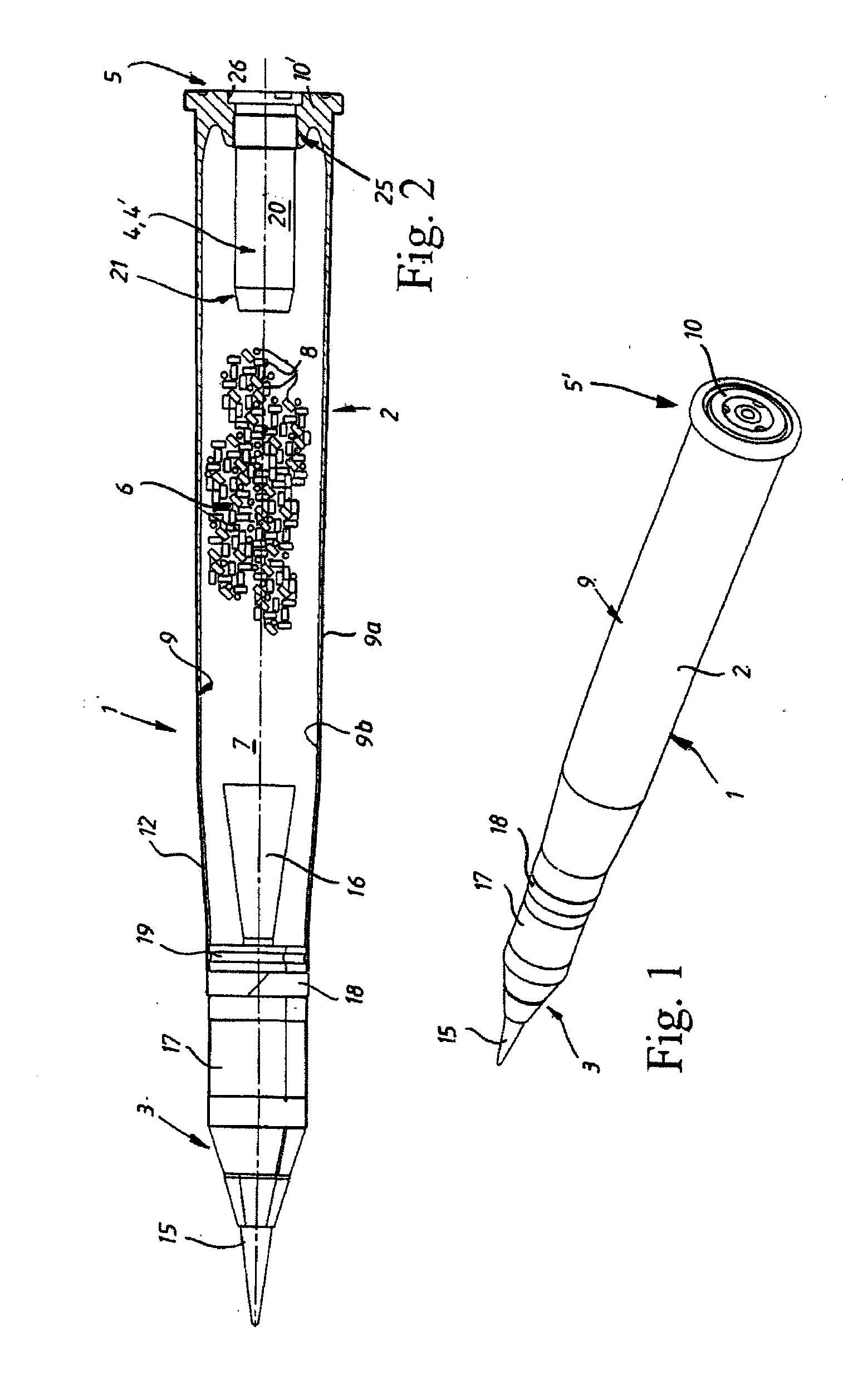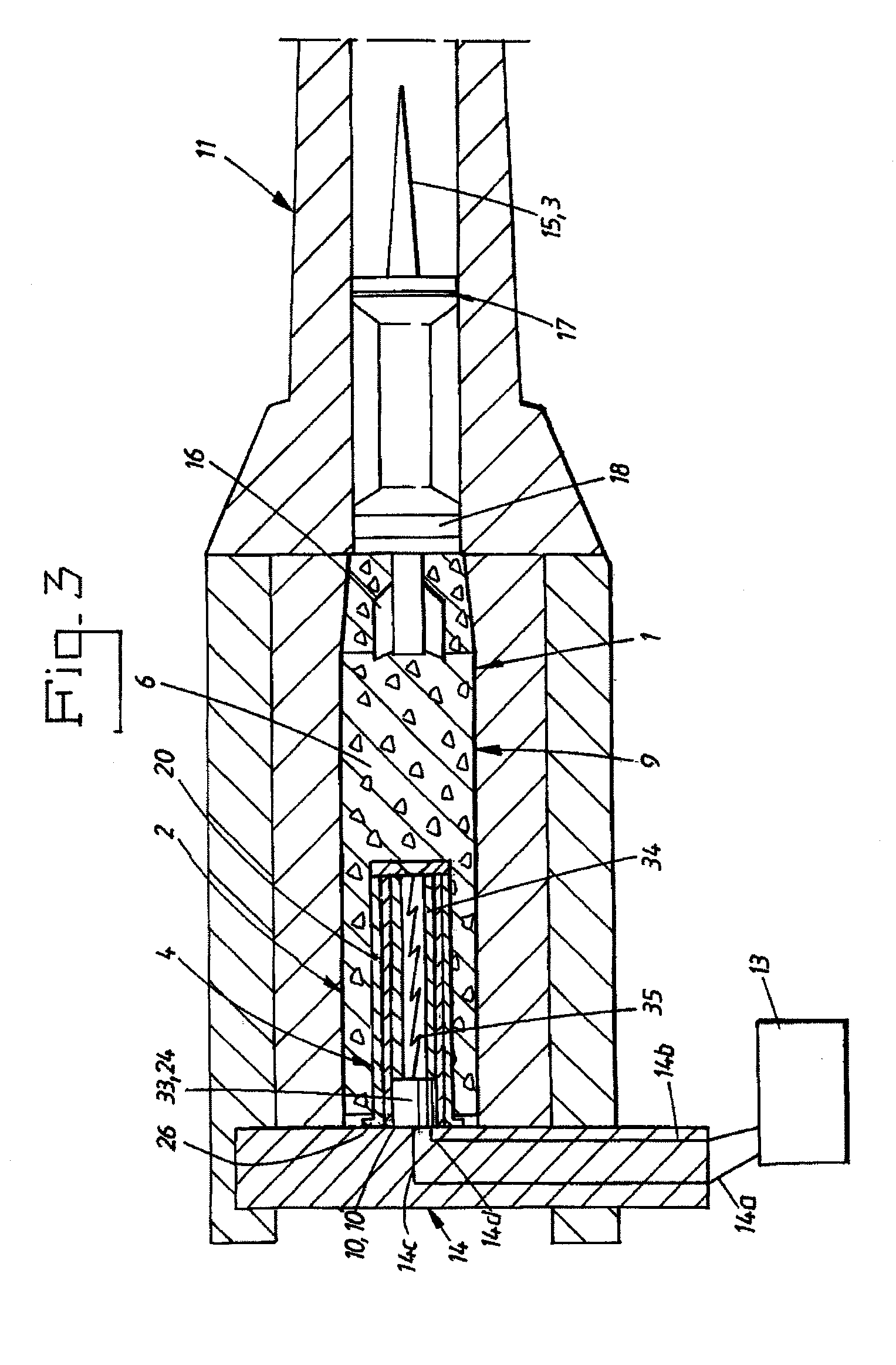Plasma generator for an electrothermal-chemical weapons system comprising ceramic, method of fixing the ceramic in the plasma generator and ammunition round comprising such a plasma generator
- Summary
- Abstract
- Description
- Claims
- Application Information
AI Technical Summary
Benefits of technology
Problems solved by technology
Method used
Image
Examples
second embodiment
[0114]In the second embodiment shown in FIG. 9 with the unique design of the central contact device 33′ and the flange 26′, comprising the so-called laminated contacts 42′, 45′ with the laminated contact strips 42, 45 fitted in the groove 41 and the inner surface 44′ of the rear central cavity 44, it is possible to automatically fire several ammunition rounds 1 in succession and also to fire several pulses for each such ammunition round 1, without play and the resulting arc occurring between the contact devices 48, 49 and laminated contacts 42′, 45′ of the breech 14 and the plasma generator 4′, such arcs normally exposing the contact devices 48, 49 to the risk of fusing tightly together, since the laminated contacts 42′, 45′ interacting with the contact devices 48, 49 readily cope with normal external vibrations, recoil and the other vibrations that occur, in the barreled weapon in question when the plasma generator 4′ is used.
first embodiment
[0115]One difference in the design of the laminated contacts 42′, 45′ shown in FIG. 9 compared to the first embodiment shown in FIG. 4 is that the laminated contact strips 42, 45 in FIG. 9 allow the contact devices 48, 49 and the laminated contact strips 42, 45 scope to slide a certain axial distance relative to one another and to still be in firm contact, thanks to the slide surface on each part interacting between them. This design of the contact surface naturally produces a larger contact surface than in the usual spot or surface contact type, so that the current transmission is distributed over this larger contact surface, thereby facilitating the current transmission and eliminating the risk of arcing, which prevents fusing / burning together even under several pulses.
[0116]Functional Description
[0117]The manufacture, function and use of the plasma generator 4, 4′ according to the invention are as follows. Compare FIG. 3 and FIG. 4 for the aforementioned first embodiment with FIG...
PUM
| Property | Measurement | Unit |
|---|---|---|
| Temperature | aaaaa | aaaaa |
| Pressure | aaaaa | aaaaa |
| Molar mass | aaaaa | aaaaa |
Abstract
Description
Claims
Application Information
 Login to View More
Login to View More - Generate Ideas
- Intellectual Property
- Life Sciences
- Materials
- Tech Scout
- Unparalleled Data Quality
- Higher Quality Content
- 60% Fewer Hallucinations
Browse by: Latest US Patents, China's latest patents, Technical Efficacy Thesaurus, Application Domain, Technology Topic, Popular Technical Reports.
© 2025 PatSnap. All rights reserved.Legal|Privacy policy|Modern Slavery Act Transparency Statement|Sitemap|About US| Contact US: help@patsnap.com



